The Growing Landscape of Autism
Autism Spectrum Disorder (ASD) has seen a notable rise in diagnoses globally over the past several decades, prompting questions about the factors behind this increase. Is autism truly becoming more common, or are other factors such as improved diagnosis and broader awareness playing a role? This article explores the multifaceted reasons behind the rising autism prevalence and sheds light on the interventions available, including the behavioral therapy cornerstone, Applied Behavioral Analysis (ABA).
Global Trends in Autism Prevalence Over Time
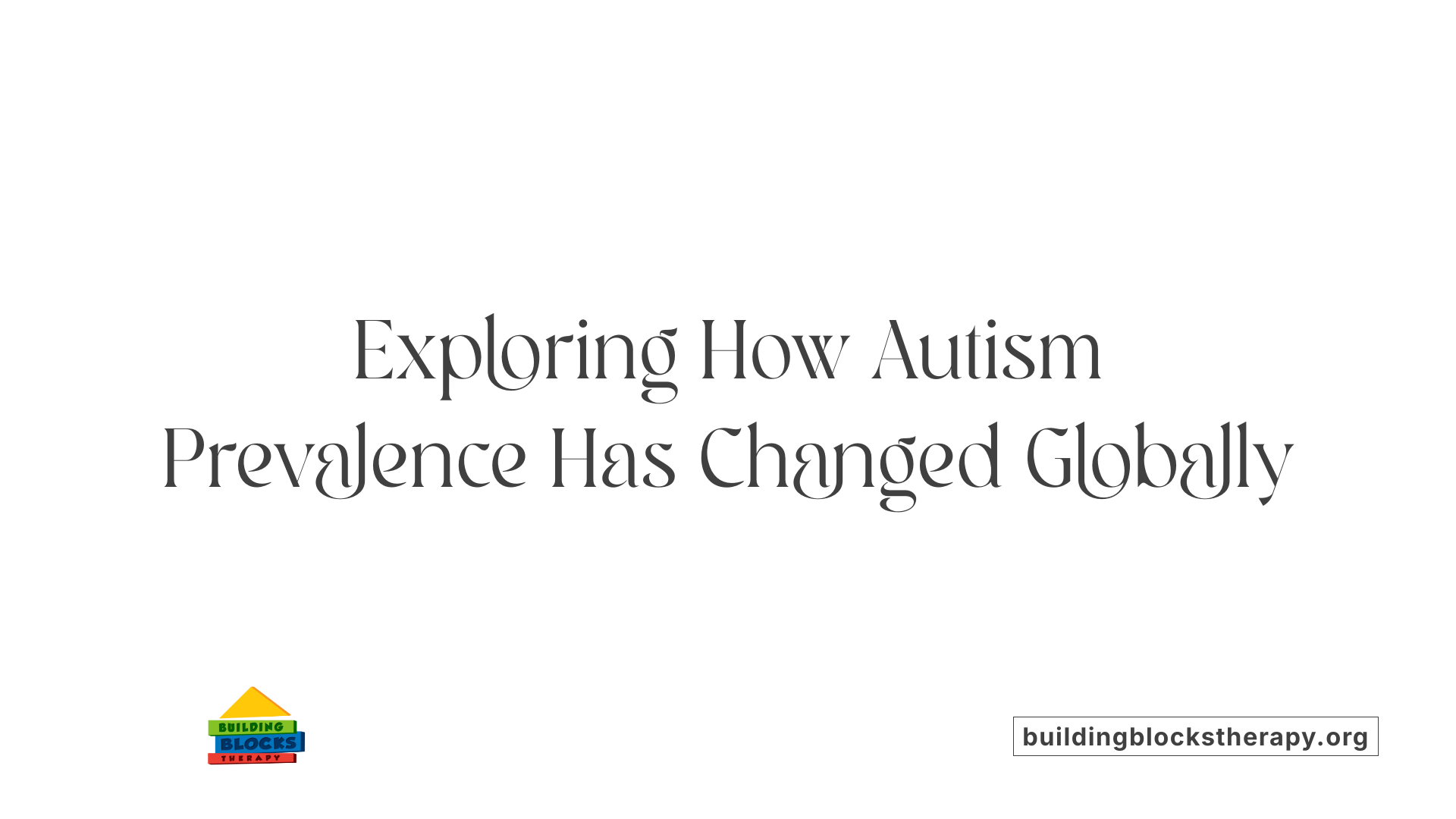
What are the recent trends in autism prevalence around the world?
Autism Spectrum Disorder (ASD) prevalence has shown a marked increase globally over the past fifty years. Initial epidemiological studies from the mid-20th century reported a prevalence of approximately 4.5 cases per 10,000 children. Current estimates place ASD at about 1 in 36 children in the United States, translating to roughly 2.94% among children aged 3 to 17, and approximately 1% across the global population.
How does prevalence vary internationally?
There is considerable international variability in ASD prevalence rates. This variation is heavily influenced by differences in screening practices, diagnostic criteria, healthcare accessibility, and cultural awareness. High-income countries often report higher rates, partly reflecting improved diagnostic tools and greater public awareness rather than an actual rise in incidence. For example, regional data from the US show prevalence fluctuations influenced by socioeconomic and racial factors.
What role do diagnostic standards play in prevalence?
Changes in diagnostic standards and screening protocols have significantly impacted reported ASD prevalence. Broader diagnostic criteria, such as the consolidation of autism-related disorders under the DSM-5, alongside enhanced public and professional awareness, have contributed to increased identification rates. Early screening initiatives using advanced technologies like AI-enhanced tools, eye-tracking, and genetics have further improved early detection and accurate diagnosis. Consequently, observed prevalence increases largely reflect enhanced detection rather than purely a true epidemic.
| Aspect | Historical Data | Recent Data | Impact Factors |
|---|---|---|---|
| Prevalence Rate | 4.5 per 10,000 (~0.045%) | ~1 in 36 children (~2.78%) US estimate | Diagnostic evolution, awareness, screening |
| Geographic Variability | Limited data available | Significant variation across countries | Screening practices, healthcare infrastructure |
| Diagnostic Criteria | Narrow definitions (DSM-IV and earlier) | Broadened criteria (DSM-5), new tools | Broader definitions, advanced technologies |
This expanding understanding of ASD prevalence underscores the importance of nuanced interpretation in research and public health policy, focusing on both scientific and sociocultural dynamics.
Why Are Autism Diagnoses Increasing?
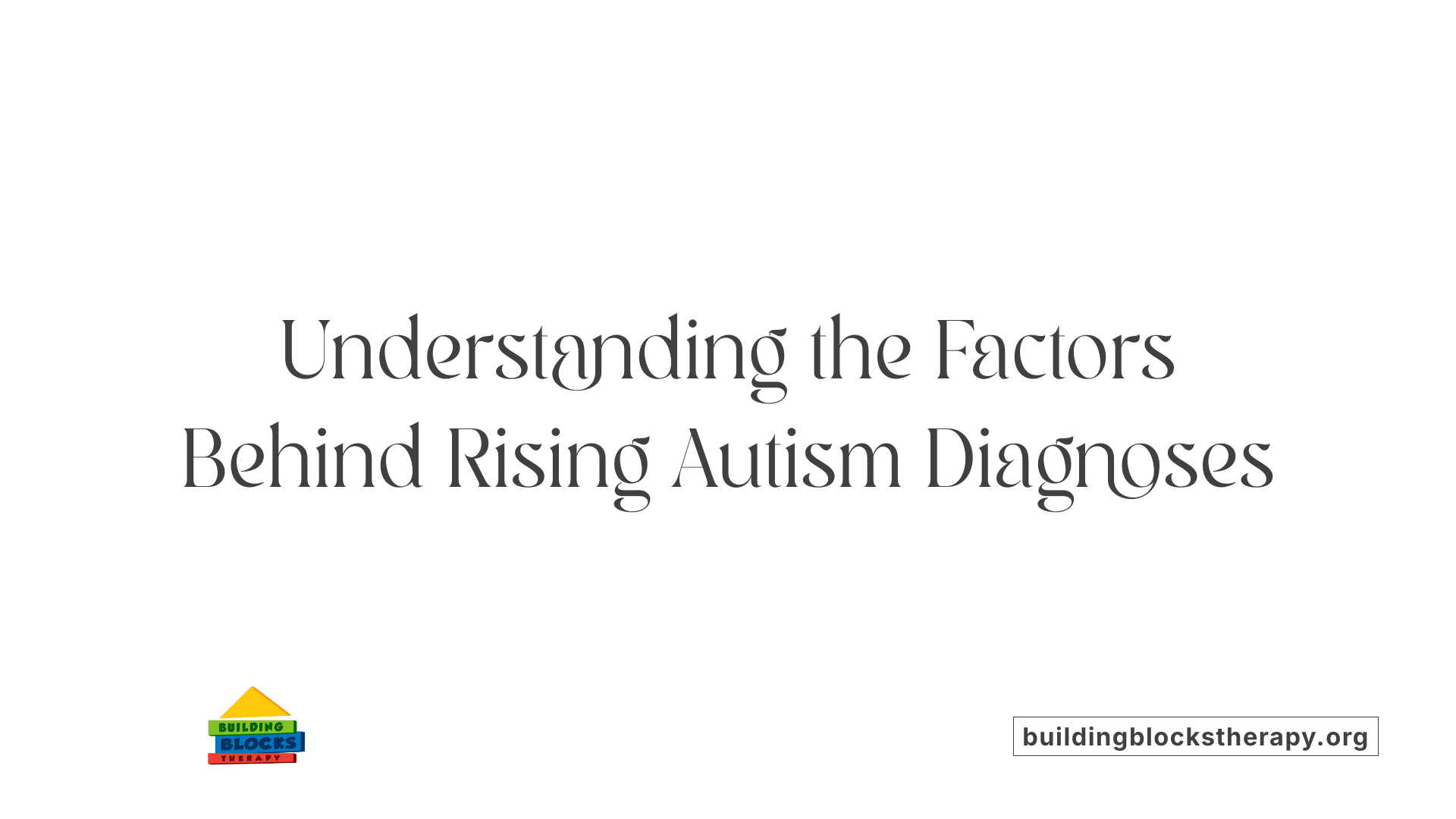
Why is autism being diagnosed more frequently nowadays?
Autism diagnoses have notably increased over recent decades, with rates rising by about 300% in the last 20 years in the US alone. This surge is largely attributed to several interrelated factors rather than a sudden rise in actual autism cases.
Diagnostic Practice Changes
The evolution of diagnostic criteria has played a major role. Earlier definitions were narrower, but recent editions of diagnostic manuals (such as the shift from DSM-IV to DSM-5) consolidated previously separate conditions like Asperger's Syndrome and Pervasive Developmental Disorder under the broader Autism Spectrum Disorder (ASD) umbrella. This broadening of diagnostic categories means a larger and more diverse group of individuals are diagnosed.
Additionally, standardized tools like the Autism Diagnostic Observation Schedule (ADOS) and Autism Diagnostic Interview-Revised (ADI-R) have enhanced consistency and accuracy in clinical evaluations.
Increased Awareness
Greater public and professional awareness has significantly improved identification rates. Social campaigns, education of healthcare providers, and increased acceptance of neurodiversity have reduced stigma and encouraged more families to seek evaluation. This awareness is particularly notable among minority and adult populations, where diagnoses previously may have been missed.
Screening Advancements
Early screening programs have become more widespread and sophisticated. Incorporation of new technologies such as eye-tracking and AI-assisted behavioral assessments aids earlier and more precise detection in toddlers and young children. These advancements enable interventions sooner, improving outcomes and thus encouraging routine screening.
Broadened Definitions of ASD
Over time, the definition of ASD has expanded beyond classic, severe presentations to include subtler phenotypes requiring less support. This inclusive approach captures individuals with mild social and communication difficulties, contributing to increased prevalence statistics.
Together, these factors explain much of the observed rise in ASD diagnoses worldwide. It is important to view this increase as a reflection of improved detection, awareness, and acceptance rather than a sudden epidemic.
| Factor | Explanation | Impact on Diagnosis Rates |
|---|---|---|
| Diagnostic Criteria | From narrow to broader ASD definitions including Asperger’s and PDD | More individuals qualify for diagnosis |
| Standardized Tools | Use of ADOS, ADI-R, and CARS improves diagnostic accuracy | Consistent and earlier diagnosis |
| Awareness & Acceptance | Social campaigns and decreased stigma promote evaluation | Increased diagnosis among minority & adult groups |
| Screening Technologies | Eye-tracking, AI, and early behavioral assessment tools | Earlier and more frequent detection |
| Broadened Definition | Inclusion of milder phenotypes with subtle impairments | Increased prevalence accounting for varied spectrum |
Genetic Contributions to Autism and Their Role in Diagnosis Trends
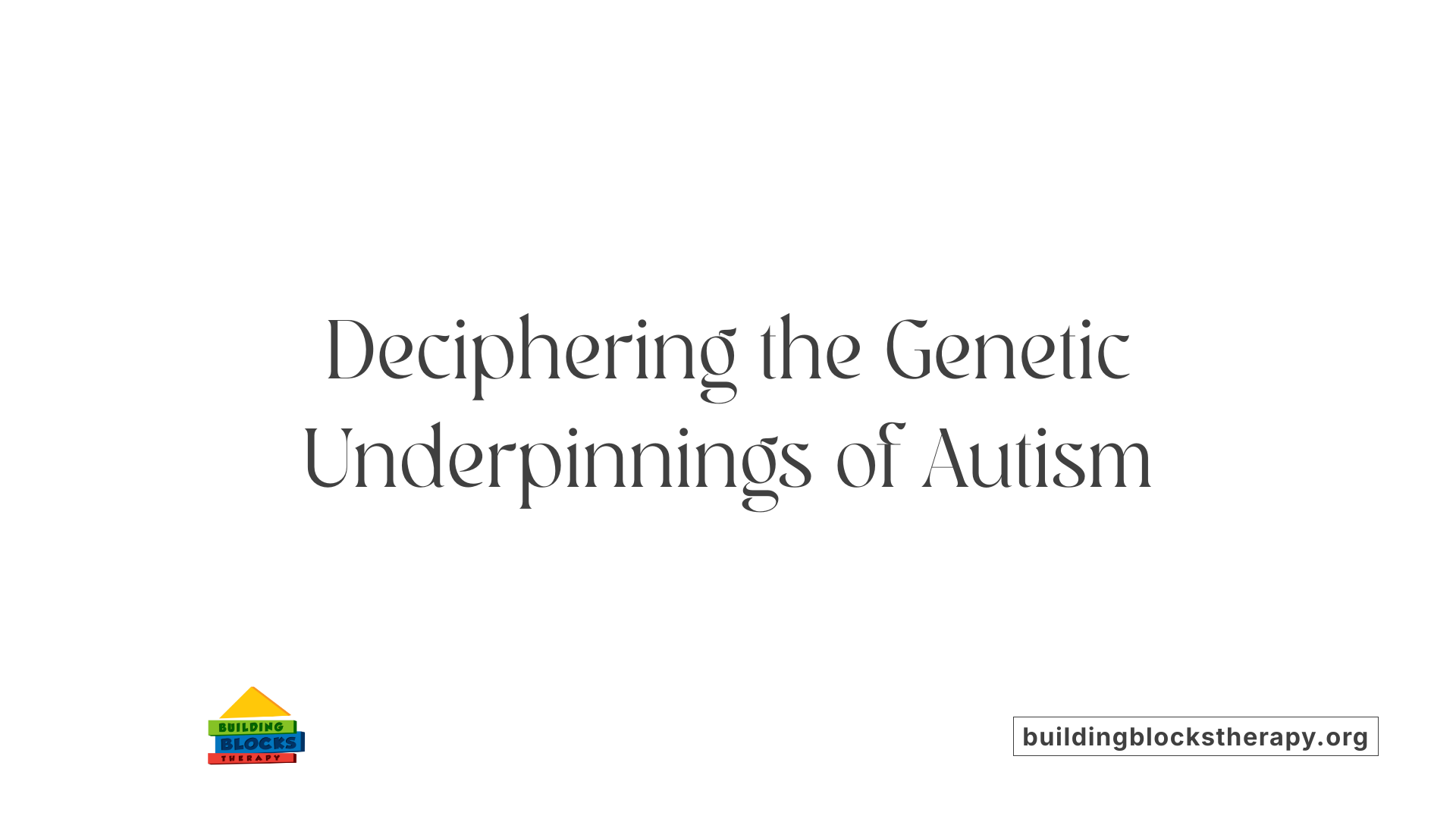
What Genetic Mutations and Variations Are Linked to Autism?
Autism spectrum disorder is influenced by a variety of genetic factors, including gene mutations and copy number variations (CNVs). Specific CNVs, such as those affecting the 16p11.2 region, have been identified as significant risk contributors. Additionally, de novo mutations—those that are new and not inherited—play a crucial role in the genetic landscape of ASD.
How Does the Polygenic Nature of Autism Affect Diagnosis?
ASD exhibits complex polygenic architecture, meaning many genes with small effects combine to influence risk. Studies using genomic structural equation modeling suggest two polygenic factors: one tied to earlier diagnosis and more pronounced social and communication challenges, and another linked with later diagnosis and increased socioemotional difficulties. This diversity highlights the heterogeneous genetic basis underlying autism.
What Role Do Gene-Environment Interactions Play?
Gene-environment interactions increasingly appear vital in shaping ASD risk. While numerous genetic variants contribute to vulnerability, environmental exposures such as maternal infections, diabetes, pollutants, and hormonal imbalances interact with genetic susceptibility during critical periods of neurodevelopment. This interplay helps explain why many individuals with genetic risk do not develop ASD unless combined with environmental triggers.
Why Is There No Clear Genetic Cause in Many Autism Cases?
Despite advances in genetic research, approximately 75–80% of autism cases lack a definitive genetic cause. This absence underscores the complexity of ASD etiology, reflecting the involvement of multiple genes with small effects, epigenetic modifications, and environmental factors. It also challenges the notion of a single genetic marker for diagnosis and signals the need for broader biomarker and molecular diagnostic approaches.
Environmental Risk Factors Linked with Autism
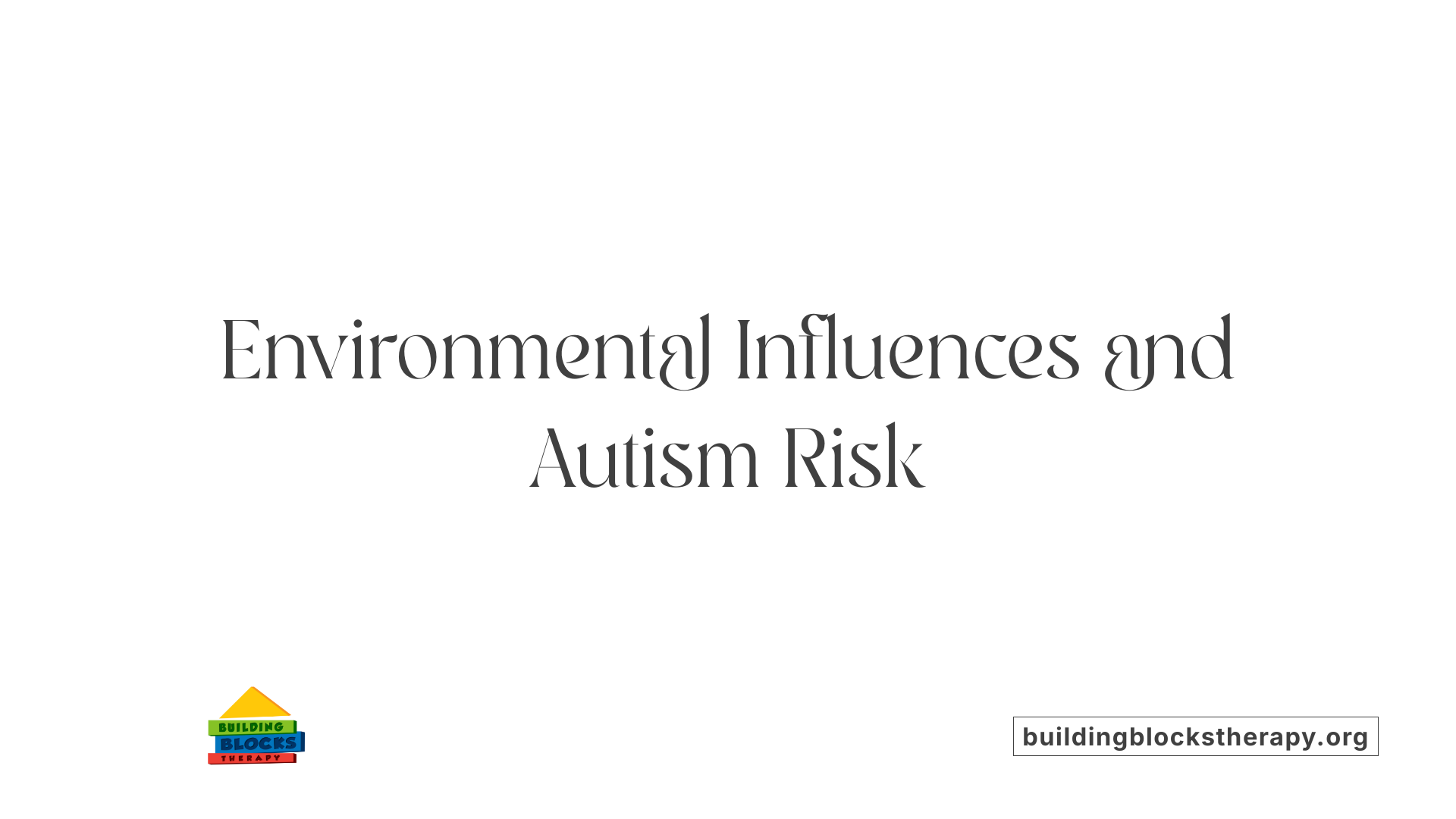
What environmental factors increase the risk of autism spectrum disorder (ASD)?
Research has identified several key environmental risk factors during early life that can influence the likelihood of developing ASD. One notable factor is advanced parental age, where older maternal and paternal ages at conception have been linked to a higher risk of autism in children.
How do maternal health conditions affect ASD risk?
Maternal health plays a significant role in ASD risk. Conditions such as maternal diabetes and infections during pregnancy have been associated with an increased probability of autism. Additionally, maternal hormonal imbalances can disrupt fetal brain development, potentially contributing to ASD.
What environmental exposures contribute to autism risk?
Exposure to pollutants—including air pollution and certain chemicals—has emerged as a critical environmental factor. Pregnant women exposed to high levels of environmental toxins and infections may experience changes in fetal neurodevelopment, elevating ASD risk.
How do nutrient deficiencies influence autism development?
Nutrient deficiencies during pregnancy, such as inadequate folate and other vital nutrients, can impair neurodevelopment and increase vulnerability to ASD. Such deficiencies, combined with other environmental stresses, may lead to altered brain structure and function.
These environmental influences often interact with genetic predispositions, making ASD a complex and multifactorial neurodevelopmental condition. Understanding these risk factors supports preventive healthcare and targeted early interventions for at-risk populations.
Gender Differences in Autism Prevalence and Diagnosis
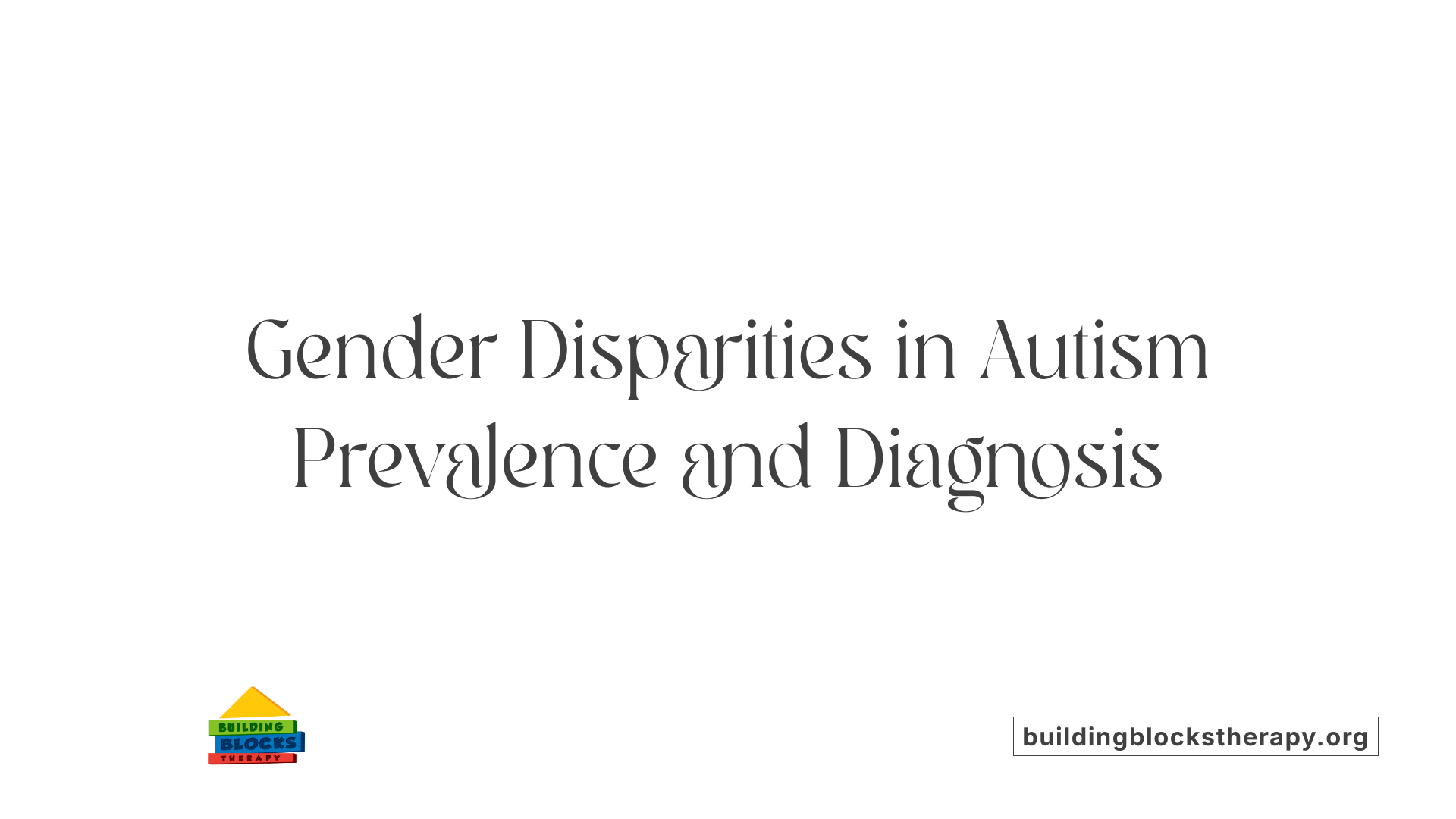
Higher Prevalence in Males
Autism spectrum disorder (ASD) is significantly more prevalent in males than in females. Data from the United States indicate that approximately 4.54% of boys are diagnosed with ASD compared to 1.26% of girls. This gender disparity is a consistent finding internationally and reflects a higher male-to-female ratio in ASD diagnosis.
Diagnosis Age Differences
Typically, ASD diagnosis occurs around the age of 4, though this can vary. Research suggests that boys are more frequently and earlier diagnosed compared to girls. Female cases are often under-recognized or diagnosed later, potentially due to differences in symptom presentation or societal expectations.
Increasing Diagnosis Rates Among Females
While males remain more commonly diagnosed, recent trends show a greater relative increase in diagnosis rates among females. This rise may be attributed to improved awareness of how autism presents in females, better diagnostic criteria, and increased screening sensitivity. These changes are helping to reduce historical underdiagnosis in girls and signify shifts toward more inclusive recognition of ASD across genders.
Racial, Ethnic, and Socioeconomic Disparities in Autism Diagnosis and Treatment
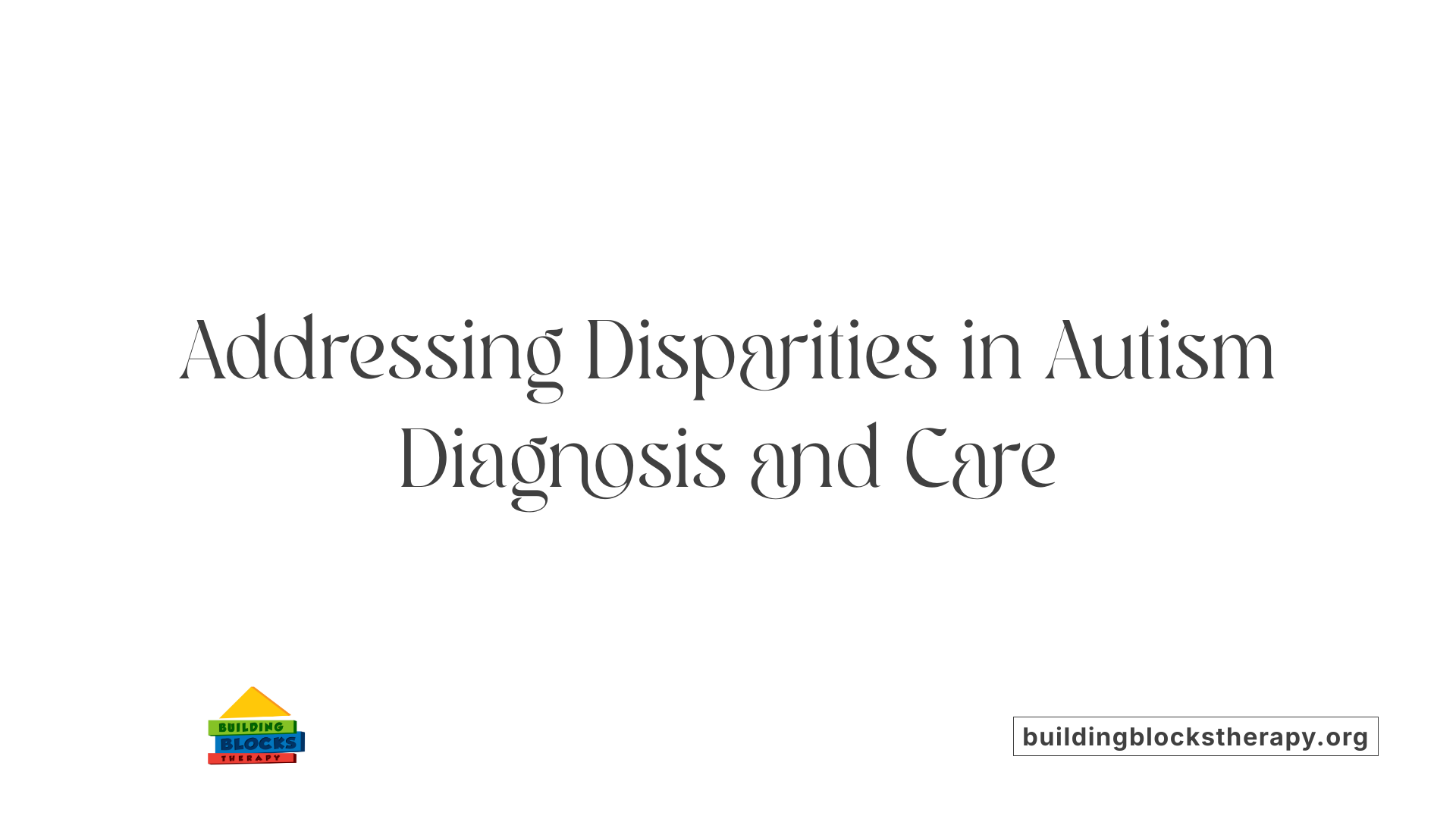
How does autism prevalence vary among different racial and ethnic groups?
Autism spectrum disorder (ASD) prevalence shows distinct variations across racial and ethnic groups. For instance, data from US children aged 3–17 indicate Hispanic children have the highest reported prevalence at 3.44%, compared to other groups. Moreover, diagnosis rates have increased across all racial and ethnic categories, with some minority communities, such as Hispanic children, experiencing a greater relative rise in diagnoses. Differences may partially reflect improved detection efforts and heightened outreach in these populations.
What socioeconomic factors influence access to autism treatment?
Socioeconomic status significantly impacts both diagnosis and treatment access for individuals with ASD. Children from families with higher income-to-poverty ratios are more likely to receive behavioral interventions, which remain the cornerstone of autism treatment. Limited resources and systemic barriers can restrict treatment opportunities for children in lower-income households, contributing to gaps in care equity.
Are there disparities in the use of behavioral therapy and medications?
Treatment patterns indicate about two-thirds of children diagnosed with ASD receive at least one form of intervention, predominantly behavioral therapies like Applied Behavior Analysis (ABA). However, disparities persist in treatment types and utilization. Behavioral therapy tends to decline as children age, with a concurrent increase in medication use, primarily for managing co-occurring behaviors such as irritability. FDA-approved medications including risperidone and aripiprazole are commonly prescribed but require careful medical supervision due to potential side effects.
Racial and ethnic disparities further influence treatment pathways, mediated by factors like healthcare access, cultural perceptions around diagnosis and intervention, and systemic biases. These disparities highlight the need for targeted healthcare approaches that improve early diagnosis, equitable treatment access, and caregiver education, especially within minority and socioeconomically disadvantaged communities.
The Developmental Trajectories of Autism Across the Lifespan
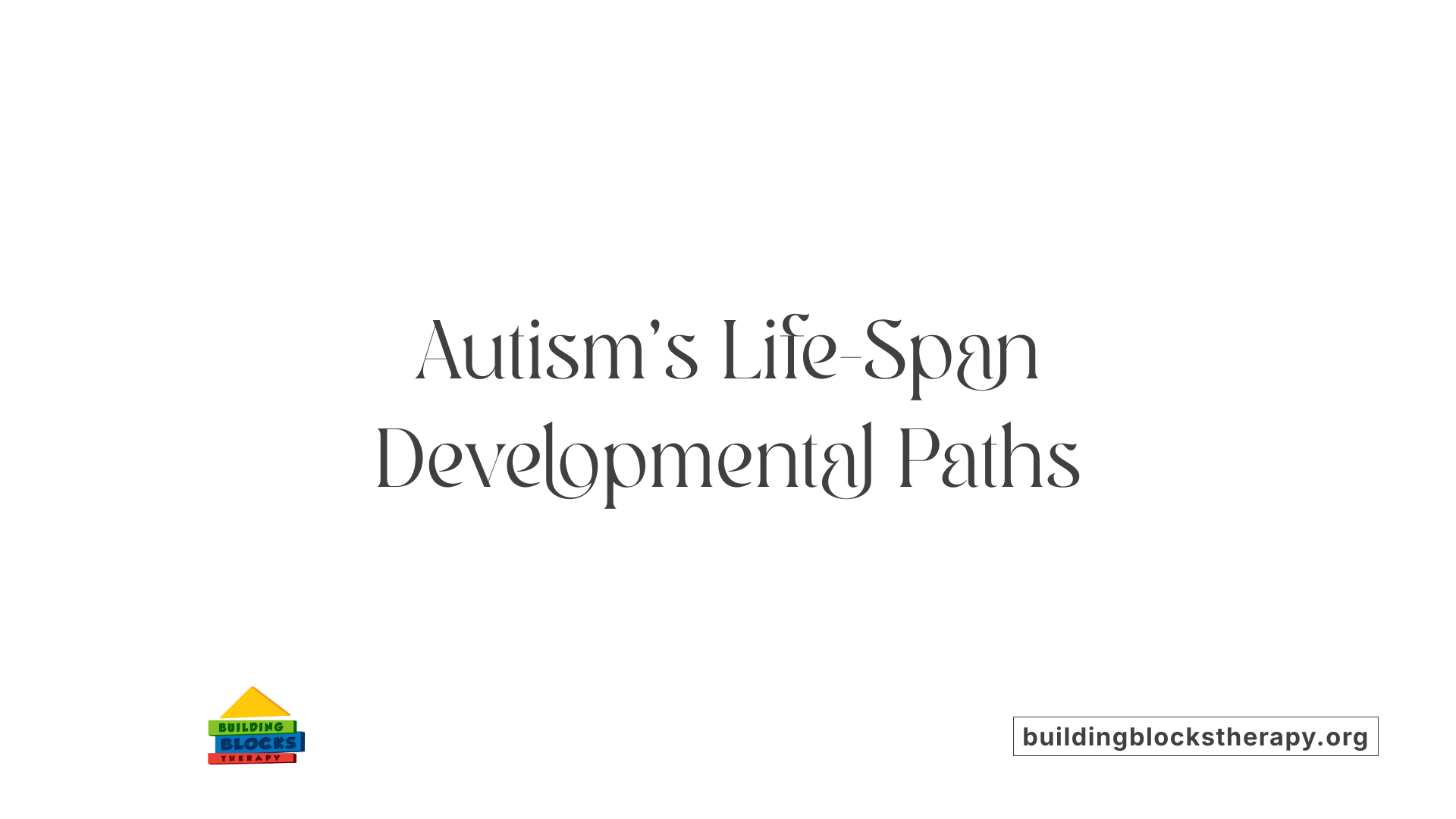
How do developmental profiles of autism differ between early childhood and adolescence?
Autism spectrum disorder (ASD) exhibits distinct developmental pathways across different life stages. Research supports two primary trajectories: one where difficulties emerge in early childhood, and another characterized by increasing challenges during adolescence. The early childhood profile typically involves pronounced social communication impairments and observable behavioral symptoms from a young age. Conversely, some individuals may not display significant difficulties until later, with symptoms becoming more apparent during adolescence as social and emotional demands intensify.
What genetic and socio-demographic factors influence age at ASD diagnosis?
Genetic contributions account for about 11% of the variance in the age at which autism is diagnosed. This includes factors such as gene mutations and polygenic risk scores that correlate with diagnostic timing. Genetic architecture can be divided into two related factors: one linked to earlier diagnosis and more severe social/communication difficulties, and another associated with later diagnosis and heightened socioemotional challenges.
Socio-demographic factors such as ethnicity, socio-economic status, and clinical presentation also interact with genetics, affecting detection and timing of diagnosis. Studies indicate that genetic influences on age of diagnosis persist even after adjusting for these non-genetic factors, supporting a developmental genetic model rather than a single unified cause.
How are autism diagnoses changing among adults?
Recent epidemiological data reveal a significant increase in autism diagnoses among young adults aged 18 to 34. This trend highlights a growing population of diagnosed autistic adults and underscores the importance of extending healthcare and support services beyond childhood. Improved awareness, broader diagnostic criteria, and better access to screening contribute to the detection of autism in adulthood.
This expanded understanding of developmental trajectories and diagnosis timing emphasizes the heterogeneity of autism and the need for personalized approaches in screening, intervention, and long-term care throughout the lifespan.
Emerging Diagnostic Tools for Autism Spectrum Disorder

Neuroimaging and EEG Classifiers
Recent advancements in neuroimaging such as functional Magnetic Resonance Imaging (fMRI) and Diffusion Tensor Imaging (DTI) have improved our ability to observe brain structure and function variations associated with ASD. Complementing these, electroencephalogram (EEG) classifiers provide dynamic markers by detecting atypical neural patterns and connectivity. These technologies offer objective data that can enhance diagnostic accuracy and even predict ASD traits early in development.
Eye-Tracking Technology
Eye-tracking has become a promising tool for early ASD screening by quantifying social engagement behaviors. This technology measures gaze patterns and visual attention, revealing differences in how children with ASD respond to social cues compared to neurotypical peers. Eye-tracking can thus contribute to earlier identification and facilitate timely interventions.
Genetic Testing and Biomarker Identification
Genetic testing now plays a crucial role in understanding ASD's complex polygenic nature. Advanced sequencing techniques have identified numerous gene mutations, copy number variations, and epigenetic modifications related to ASD risk. Concurrently, research into biomarkers—including gene expression profiles, inflammatory markers, and gut microbiota characteristics—is exploring molecular signatures that could support more precise, personalized diagnoses.
Together, these emerging diagnostic approaches are moving autism detection beyond traditional behavioral assessments, helping to identify ASD more accurately and earlier, and opening the door to personalized intervention strategies tailored to individual neurobiological profiles.
Applied Behavioral Analysis (ABA) Therapy Explained

What is Applied Behavioral Analysis (ABA) therapy?
Applied Behavioral Analysis (ABA) therapy is a scientifically validated treatment rooted in the principles of learning and behavior, particularly operant conditioning. It focuses on understanding how environmental factors influence behaviors, and it seeks to increase beneficial behaviors while reducing harmful or disruptive ones. ABA uses individualized programs tailored by qualified behavior analysts to best meet each person's unique needs.
Learning Techniques Employed
ABA therapy employs various learning techniques including:
- Positive Reinforcement: Encourages desired behaviors by rewarding them immediately after they occur.
- Prompting: Provides cues or guidance to help a person perform a behavior, gradually reducing support as the skill is learned.
- Natural Reinforcement: Reinforces behaviors through naturally occurring outcomes to promote generalization beyond the therapy setting.
- Task Analysis: Breaking complex skills into smaller, teachable steps. These techniques are applied systematically to teach social skills, communication, attention, academic skills, and daily living abilities.
Evidence Supporting Its Effectiveness
ABA is one of the most researched and evidence-based therapies for autism spectrum disorder. Numerous clinical trials and longitudinal studies have demonstrated significant gains in communication, social interaction, and adaptive behaviors in children receiving ABA therapy. While it is broadly effective, research continues to optimize approaches and clarify long-term outcomes. ABA remains the primary behavioral intervention endorsed by professional guidelines and often serves as a foundation for combining other therapies.
ABA therapy's structured yet flexible approach has made it a cornerstone of autism treatment, helping many individuals develop critical skills that enhance their independence and quality of life.
Who Provides ABA Therapy and How It Is Delivered

Who typically provides ABA therapy?
ABA therapy is primarily provided by specialized professionals, including board-certified behavior analysts (BCBAs) and trained therapists. These experts have undergone specific education and certification to assess and implement behavior-based interventions effectively.
Treatment settings
ABA therapy can be delivered in a variety of environments to best suit the individual’s needs and enhance learning outcomes. Common settings include private practices, outpatient clinics, schools, and sometimes in home environments. This flexibility allows treatment to be embedded into everyday activities and contexts, facilitating generalization of skills.
Individualized program development
Each ABA program is uniquely designed following an initial comprehensive evaluation conducted by the BCBA or supervising therapist. Programs focus on teaching targeted skills through systematic, reward-based learning. Complex skills are broken down into manageable steps, and positive reinforcement is offered to encourage progress. The individualized approach addresses the unique behavioral and communication challenges of each person with ASD.
Family involvement
Family involvement is a critical component of effective ABA therapy. ABA providers often train parents and caregivers in intervention strategies, equipping them to support skill acquisition and behavioral improvements outside clinical sessions. This collaboration strengthens treatment outcomes by creating consistent reinforcement and promoting skill use in natural environments.
Through these combined efforts—specialized professionals, flexible settings, tailored programs, and family engagement—ABA therapy offers structured, evidence-based support for individuals with autism spectrum disorder.
Techniques and Methods Commonly Used in ABA Therapy

What methods are commonly used in ABA therapy to modify behavior?
Applied Behavior Analysis (ABA) therapy employs several evidence-based strategies to encourage positive behavioral changes. The cornerstone is positive reinforcement, which involves rewarding desired behaviors to increase their frequency. This technique helps individuals with ASD learn and maintain new skills.
One widely used method is Discrete Trial Training (DTT). DTT breaks down complex skills into simplified, manageable steps, delivered through repeated trials with clear instructions and immediate reinforcement. This structured approach facilitates skill acquisition in a controlled environment.
Modeling and prompting are another integral part of ABA. Modeling involves demonstrating the desired behavior, while prompting supports the individual to perform it, gradually reducing assistance (fading) as independence grows. These techniques help teach communication, social, and daily living skills.
Visual aids such as visual supports (e.g., charts, schedules, and pictures) alongside Functional Communication Training (FCT) are used to enhance understanding and expression, especially for individuals with limited verbal abilities. FCT replaces challenging behaviors with functional communication to fulfill the same need.
An essential component of ABA therapy is progress monitoring through data collection. Therapists systematically record behaviors and responses during sessions, which enables ongoing assessment of intervention effectiveness and guides necessary modifications to optimize outcomes.
Together, these methods form a comprehensive framework in ABA therapy to teach skills, reduce challenging behaviors, and support meaningful improvements in individuals with autism spectrum disorder.
Benefits of ABA Therapy for Individuals with Autism
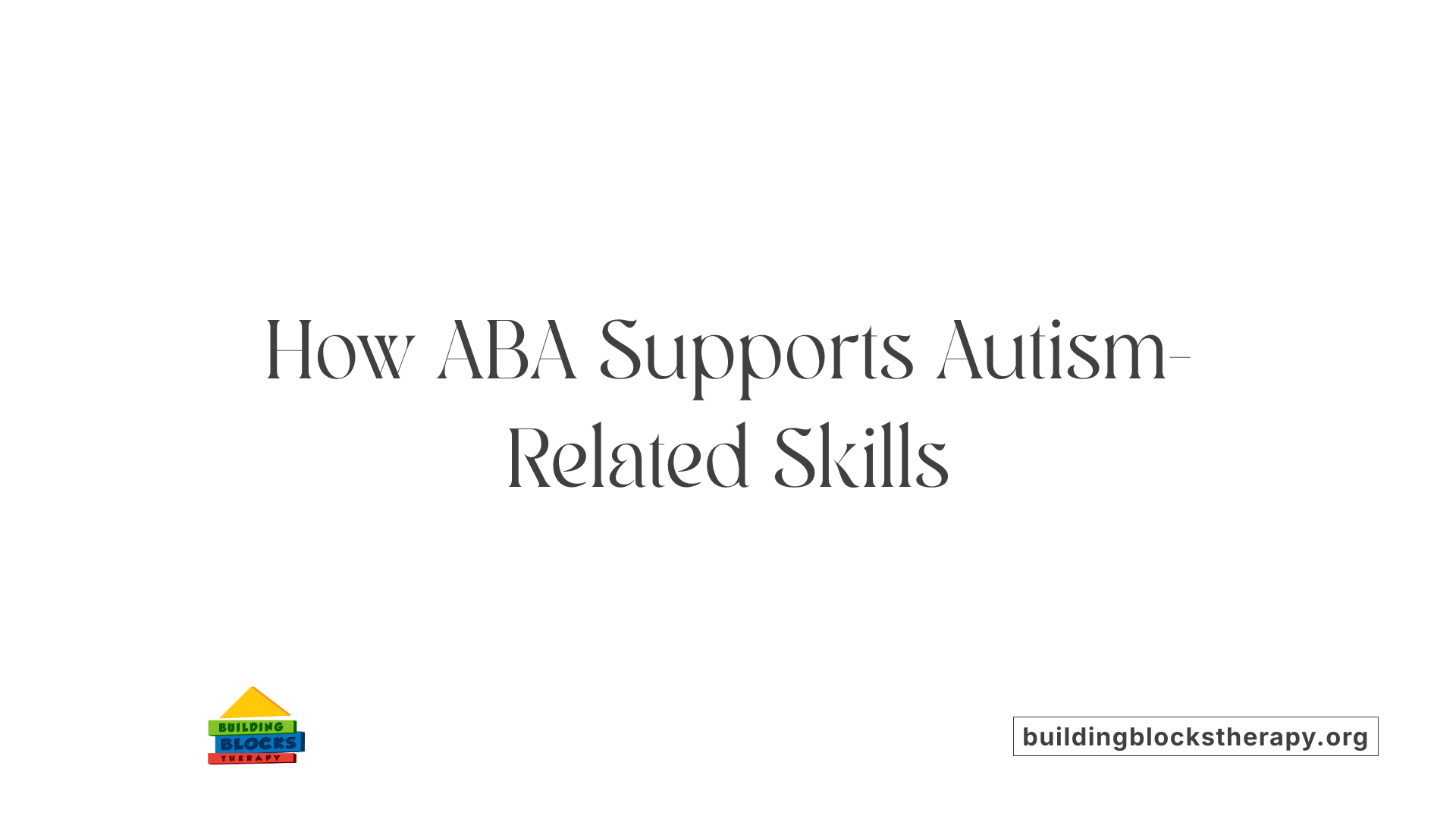
How does ABA therapy benefit individuals with autism?
Applied Behavior Analysis (ABA) therapy is widely recognized as an effective approach for supporting individuals with autism spectrum disorder. It primarily works by promoting the development of essential skills including communication, social interaction, and daily living abilities. These improvements arise through personalized, evidence-based interventions tailored to each individual's strengths and needs.
Skill development in communication and socialization
ABA employs strategies such as positive reinforcement, prompting, and natural environment training to help increase desired behaviors and decrease challenges. This structured approach systematically enhances communication skills, enabling individuals to express needs and interact socially in meaningful ways. Socialization improves through targeted activities, facilitating better understanding of social cues and appropriate responses.
Early intensive intervention advantages
Starting ABA therapy early—typically before age four—and ensuring it is intensive can lead to significant advances. Early intensive ABA has been shown to improve language acquisition, social behaviors, and adaptability, laying a foundation for long-term progress. This timely intervention maximizes neurodevelopmental opportunities and contributes to better cognitive and behavioral outcomes.
Personalized treatment focus
ABA therapy emphasizes personalized goal setting to align with each child's preferences, family context, and learning style. This customized approach increases motivation and engagement, making therapy more effective across different environments such as home, school, and community. By focusing on individual strengths, ABA fosters meaningful progress that is relevant to daily life.
Improvements in independence and quality of life
Ultimately, ABA therapy aims to equip individuals with autism to become more independent and functionally capable. Gains in communication, social skills, and adaptive behaviors contribute to enhanced personal autonomy. These improvements positively affect quality of life by supporting participation in typical activities, reducing reliance on support, and fostering inclusion.
ABA therapy remains the most scientifically supported treatment for helping individuals with autism achieve lasting benefits across multiple domains, making it a cornerstone of autism intervention strategies.
| Benefit Area | Description | Impact |
|---|---|---|
| Communication Skills | Improved expressive and receptive abilities | Better self-expression and understanding |
| Socialization | Enhanced interaction and social cue recognition | Increased social engagement and relationships |
| Early Intervention | Intensive treatment before age four | Greater neurodevelopmental gains and long-term progress |
| Personalization | Tailored goals based on strengths/preferences | Higher motivation and engagement across settings |
| Independence & Quality of Life | Increased adaptive behaviors and autonomy | Improved daily functioning and societal inclusion |
Behavioral Therapy in the Broader Context of ASD Treatment
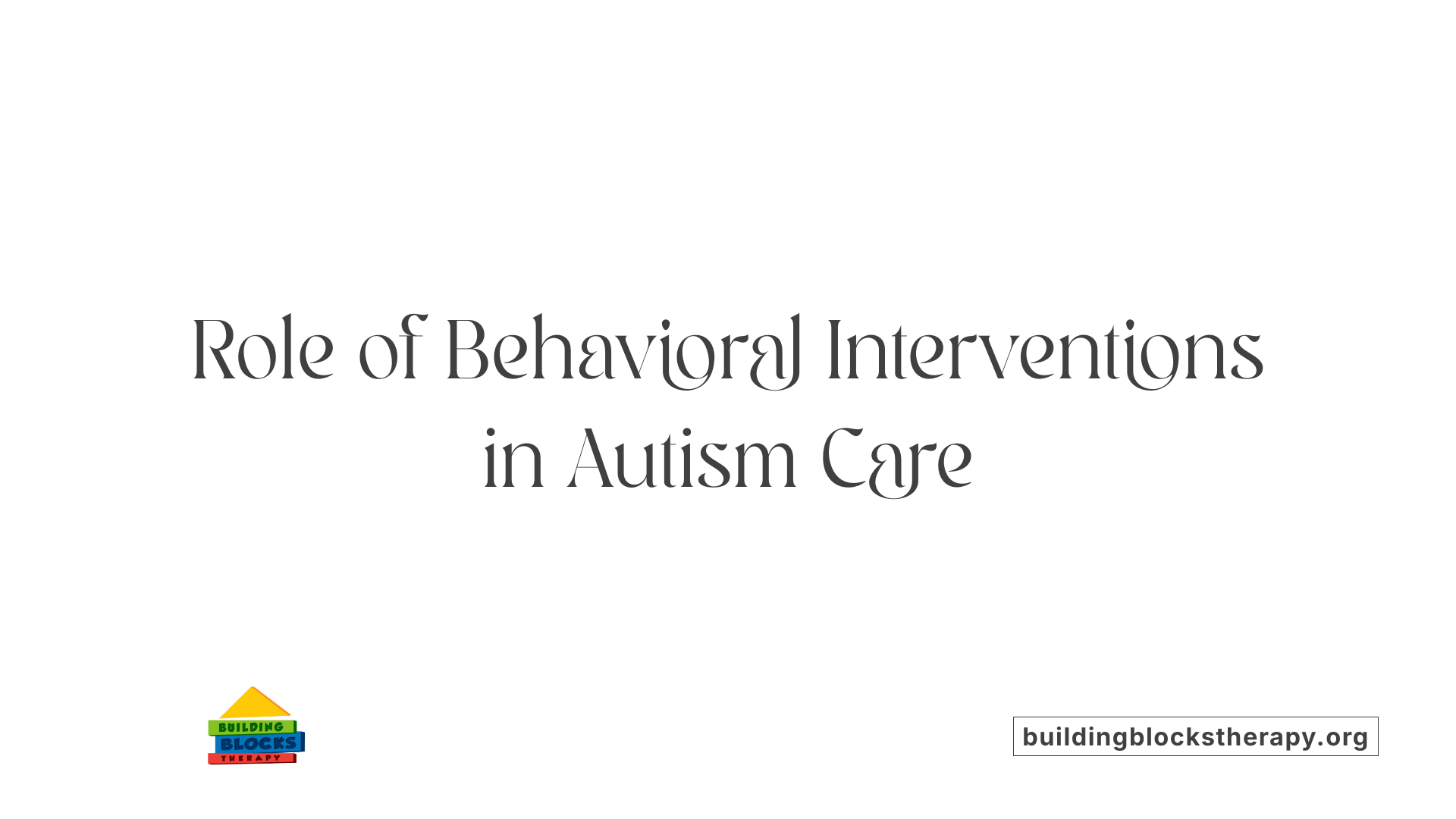
What is the role of behavioral therapy alongside medications in ASD treatment?
Behavioral therapy remains the cornerstone of autism spectrum disorder (ASD) treatment, primarily addressing challenges in social communication and behavior. Interventions such as Applied Behavior Analysis (ABA) and social skills training focus on improving daily living and social interaction skills through structured reinforcement and practice.
While behavioral therapies target core ASD symptoms, medications are typically prescribed to manage co-occurring symptoms, such as irritability and aggression. The FDA has approved drugs like risperidone and aripiprazole specifically for these behavioral issues. Medication use is considered adjunctive and requires careful supervision due to potential side effects.
Why does behavioral therapy use decline with age?
Research shows that behavioral therapy utilization declines as children with ASD grow older. This trend may relate to multiple factors, including limited availability of age-appropriate programs, changes in symptom presentation, or decreased access as transition to adolescence and adulthood occurs. Despite this decline, behavioral interventions remain important for ongoing skill development.
Concurrently, medication use tends to increase with age, reflecting a shift toward managing emerging or persistent behavioral challenges that may not respond fully to therapy alone.
How are co-occurring symptoms managed alongside behavioral therapies?
Management of co-occurring symptoms is typically multifaceted. Behavioral therapies lay the foundation for improving communication and socialization, while pharmacological treatments address specific behavioral issues like irritability, anxiety, or hyperactivity that can interfere with learning and quality of life.
Emerging treatment approaches—including neuromodulation techniques, antioxidants, and neuropeptides—are being investigated to complement existing therapies, aiming for personalized and targeted strategies.
Overall, an integrated treatment plan combining behavioral therapies and medications tailored to individual needs is essential to support individuals with ASD throughout their development.
Medications Used in Autism and Their Purpose

FDA-approved drugs like risperidone and aripiprazole
Two medications, risperidone and aripiprazole, have been approved by the FDA specifically for managing irritability and associated behavioral symptoms in children with autism spectrum disorder (ASD). These drugs are atypical antipsychotics that can help reduce symptoms such as aggression, temper tantrums, and self-injurious behaviors.
Targeting irritability and associated symptoms
While behavioral therapy remains the cornerstone of ASD treatment, these medications target co-occurring symptoms that interfere with daily function and quality of life. They do not treat the core features of autism but can alleviate severe behavioral challenges that impede learning and social interactions.
Importance of medical supervision
Use of risperidone and aripiprazole requires close medical supervision due to potential side effects, including weight gain, metabolic changes, and sedation. Regular monitoring ensures safe dosing and helps manage adverse effects, enabling the best possible outcomes.
Overall, medications serve as adjunctive therapies within a comprehensive treatment plan that includes behavioral and psychosocial interventions tailored to the individual's needs.
Innovative and Emerging Therapies Under Investigation
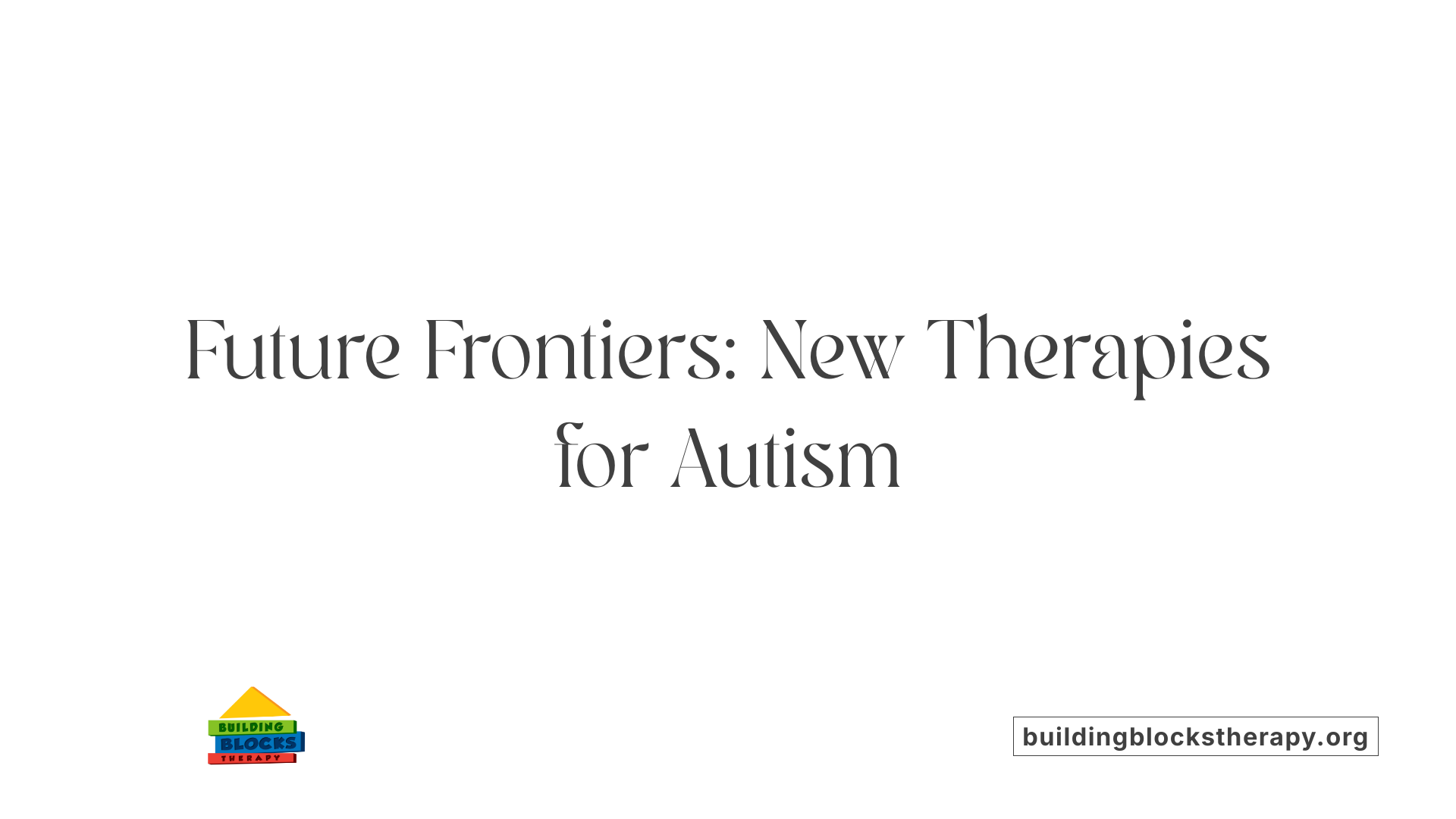
What are the emerging digital and neuromodulation therapies for ASD?
Recent advances in Autism Spectrum Disorder (ASD) therapy highlight digital interventions and neuromodulation techniques as promising approaches. Digital interventions include virtual reality programs, computer-assisted training, and mobile applications designed to enhance communication, social skills, and behavioral regulation. These tools offer interactive, personalized learning environments that can be adapted to individual needs.
Neuromodulation strategies like Transcranial Magnetic Stimulation (TMS) and Transcranial Direct Current Stimulation (tDCS) aim to modify brain activity non-invasively. Although still experimental, these methods show potential in improving symptoms related to social interaction and executive function, but require further validation through clinical trials.
How do neuropeptides and receptor antagonists contribute to ASD treatment?
Therapies involving neuropeptides—particularly oxytocin—are under investigation for their ability to enhance social bonding and reduce anxiety in individuals with ASD. Oxytocin administration has shown some benefit in improving social cognition and emotional recognition.
Additionally, receptor antagonists targeting specific neurotransmitter systems are being evaluated. For example, FDA-approved medications like risperidone and aripiprazole primarily manage irritability and aggression rather than core ASD symptoms. Newer receptor modulators, including PPAR agonists and mTOR inhibitors, are also explored to influence underlying neurobiological pathways associated with ASD.
What role does personalized medicine and novel pharmaceuticals play in ASD management?
Personalized medicine approaches use genetic, epigenetic, and biomarker profiles to tailor treatments specifically for each individual. This strategy aims to improve therapeutic outcomes by targeting molecular mechanisms unique to the person's ASD subtype.
Novel pharmaceuticals under research include agents that act on inflammatory pathways, oxidative stress, and neurodevelopmental signaling. These interventions seek to address diverse aspects of ASD pathology beyond behavioral symptoms. The integration of genomics with clinical data supports the development of precision treatments that hold promise for better efficacy and reduced side effects.
Together, these innovative therapies represent a shift toward more targeted, multifaceted interventions that can complement traditional behavioral therapies and improve quality of life for individuals with ASD.
Role of Early Screening and Diagnosis in Autism

Why is early screening important for intervention effectiveness?
Early screening and diagnosis of autism spectrum disorder (ASD) are critical for enabling timely interventions that substantially improve long-term outcomes. When ASD is identified early, behavioral therapies such as Applied Behavior Analysis (ABA) and social skills training can be initiated during crucial developmental windows. These interventions support the enhancement of social communication and daily living skills, helping reduce the severity of symptoms and improving adaptive functioning.
What are the current trends in age at diagnosis?
Traditionally, ASD diagnosis often occurs around age 4, but shifting trends show diagnoses increasingly happening earlier due to better screening tools and awareness. Recent epidemiological data highlight two developmental trajectories: one with early childhood symptom emergence and another with difficulties increasing in adolescence. Genetic factors contribute about 11% to the variance in age at diagnosis, illustrating how biological and sociodemographic factors jointly influence timing.
Interestingly, diagnosis rates are highest among children aged 5-8 and show declines in older age groups. Also, the relative increase in diagnoses has been greater among females and certain minority populations, reflecting improved detection efforts.
What tools facilitate early detection of ASD?
Advances in diagnostic methods have expanded beyond clinical observation to include technological and biological tools that facilitate earlier and more precise detection. Effective screening employs standardized instruments such as the Autism Diagnostic Observation Schedule (ADOS), Autism Diagnostic Interview-Revised (ADI-R), and Childhood Autism Rating Scale (CARS).
Emerging techniques harness artificial intelligence (AI), machine learning, eye-tracking to assess social engagement patterns, and neuroimaging modalities like functional MRI (fMRI) and diffusion tensor imaging (DTI). Molecular and digital diagnostic biomarkers—such as gene expression profiles, inflammatory markers, and gut microbiota characteristics—are under active investigation to complement behavioral assessments.
These integrated approaches contribute to a more objective, nuanced understanding of ASD symptoms, enabling personalized treatment plans and supporting early interventions that can alter developmental trajectories favorably.
Integration of Genetic and Environmental Insights in Understanding ASD

How do polygenic risk and epigenetic changes contribute to ASD?
Autism Spectrum Disorder (ASD) has a complex genetic architecture involving multiple genes. Polygenic risk refers to the combined effect of numerous genetic variants, including single nucleotide polymorphisms and copy number variations, which contribute modestly to ASD susceptibility. Epigenetic modifications, such as DNA methylation and histone changes, affect gene expression without altering the DNA sequence and play a role in ASD development by influencing neurodevelopmental pathways.
Many ASD risk genes have been identified, yet around 75-80% of cases lack a definitive genetic cause, underscoring the complexity of ASD genetics. Recent studies using genomic structural equation modeling reveal two partially distinct polygenic factors associated with ASD: one linked to earlier diagnosis and social communication difficulties, and another connected with later diagnosis and socioemotional challenges.
What maternal and prenatal exposures increase ASD risk?
Environmental factors during pregnancy and early development critically influence ASD risk. Key maternal and prenatal exposures linked to increased ASD include advanced parental age, maternal diabetes, infections, exposure to environmental pollutants, certain medications, nutrient deficiencies, and hormonal imbalances. These exposures can disrupt typical neurodevelopment through inflammatory responses, oxidative stress, or altered fetal brain maturation.
Several studies highlight maternal infections and exposure to toxins as significant contributors. Nutritional deficits such as folate deficiency also elevate the risk of neurodevelopmental disorders, including ASD.
How does gene-environment interplay shape ASD development?
The rising prevalence of ASD reflects more than genetics or environment alone; it emphasizes intricate gene-environment interactions. Genetic susceptibilities may increase vulnerability to environmental insults during critical windows of neurodevelopment. For instance, specific gene variants may modulate the effect of prenatal exposures like toxins or infections, influencing ASD risk and severity.
Epigenetic mechanisms serve as a molecular interface for this interplay by translating environmental signals into changes in gene regulation. This dynamic relationship highlights that both inherited genetic factors and modifiable environmental risks converge to affect ASD etiology.
Understanding this integration supports tailored prevention approaches and targeted interventions that may consider both genetic profiles and environmental histories for improved outcomes in individuals with ASD.
Neurodiversity and Societal Perspectives on Autism
Emphasis on Acceptance and Inclusion
The concept of neurodiversity has fundamentally shifted how society views autism, moving away from viewing it solely as a disorder to recognizing it as a natural variation in human neurodevelopment. This perspective stresses acceptance and the importance of embracing autistic individuals as integral members of the community. Recognizing autism as a difference rather than a deficit fosters greater social inclusion and reduces stigma.
Shift from Deficit to Difference Model
Historically, autism was predominantly seen through a deficit-based lens, focusing on the challenges and impairments associated with the condition. However, the neurodiversity movement advocates for a difference model that highlights autistic strengths and unique perspectives. This approach encourages support systems that build on these strengths and promote individualized ways of learning, communicating, and interacting with the world.
Policy-Driven Social Integration
Social policies have begun to reflect this evolving understanding by promoting inclusive education, employment opportunities, and comprehensive social services for autistic individuals. These policies aim to enhance quality of life and facilitate societal participation. Inclusive educational programs, employment initiatives, and support networks contribute to breaking down barriers, ensuring autistic individuals receive equitable opportunities to thrive in all aspects of life.
Embracing neurodiversity not only humanizes autism but also helps tailor interventions, supports, and societal attitudes to be more compassionate and effective, thereby fostering a more inclusive society overall.
The Importance of Family Support and Caregiver Involvement
Training and Advocacy Programs for Families
Families of children with autism spectrum disorder (ASD) play a crucial role in the ongoing care and development of their loved ones. Training programs empower caregivers with knowledge and skills to effectively support therapies such as Applied Behavior Analysis (ABA), social skills training, and sensory integration therapies at home. These programs also educate families about ASD characteristics and intervention options, enabling informed decision-making and proactive advocacy for their children's needs.
Advocacy programs are integral in connecting families to resources, navigating healthcare systems, and fostering community inclusion. They raise awareness about rights and available services, helping reduce disparities in access, especially among minority and lower-income populations. Through advocacy, families become active participants in shaping policies and improving social support frameworks.
Sustaining Therapy Benefits Through Caregiver Involvement
Ongoing caregiver engagement is essential for sustaining the benefits of behavioral and developmental therapies. Parents and caregivers who are involved in therapy sessions can reinforce strategies throughout daily routines, promoting generalization of skills and more consistent progress. This partnership between professionals and families enhances treatment efficacy and supports individualized approaches tailored to each child's needs.
This involvement also aids in early identification of challenges or changes in symptoms, allowing timely adjustments to treatment plans. Moreover, caregiver participation fosters stronger communication and trust in clinical relationships, contributing to better overall outcomes.
Respite Care Availability and Its Significance
Providing care for children with ASD can be demanding, and respite care services offer vital short-term relief for families. Access to quality respite care allows caregivers to rest and recharge, helping to prevent burnout and maintain their own well-being.
Respite programs also provide opportunities for children to engage in structured social and recreational activities, which can support their development in a safe environment. Availability of such services varies, often influenced by socioeconomic factors, highlighting the need for expanded and equitable respite care options.
Together, training, advocacy, and respite care form a supportive network that empowers families, enhances therapeutic outcomes, and improves quality of life for both children with ASD and their caregivers.
Challenges and Disparities in ASD Healthcare Implementation

What Are the Access Disparities in ASD Healthcare?
Access to healthcare services for individuals with Autism Spectrum Disorder (ASD) is unevenly distributed across different socioeconomic and racial groups. Children from families with higher income-to-poverty ratios are more likely to receive behavioral treatments like Applied Behavior Analysis (ABA), highlighting a clear income-based disparity. Moreover, while two-thirds of children with ASD receive some form of treatment, those from lower socioeconomic backgrounds often face reduced access to early intervention services, which are vital for improved developmental outcomes.
How Do Systemic Biases and Cultural Barriers Affect ASD Treatment?
Racial and ethnic disparities also characterize ASD diagnosis and treatment patterns. Minority groups, including Hispanic and Black children, have historically had lower diagnosis and treatment rates, attributable to systemic biases within healthcare, cultural perceptions about developmental disorders, and reduced healthcare accessibility. These disparities contribute to delays in diagnosis, which often occur around age 4 but vary widely depending on demographic factors. Cultural barriers can restrict awareness and acceptance of ASD, further complicating timely and effective care.
Why Are Tailored Healthcare Strategies Needed for ASD?
Ongoing challenges in delivering equitable ASD care call for healthcare strategies tailored to diverse populations. Targeted outreach programs are essential to improve screening and diagnosis rates among underserved communities. Enhancing parental and caregiver education about ASD symptoms and intervention options can mitigate cultural barriers. Furthermore, health policy must focus on integrating behavioral therapy and medication management in ways that accommodate varied cultural, economic, and social contexts. Addressing these issues supports the broader goal of inclusive, high-quality care for all individuals with ASD regardless of background.
Social Policies Supporting Autism Research and Inclusion
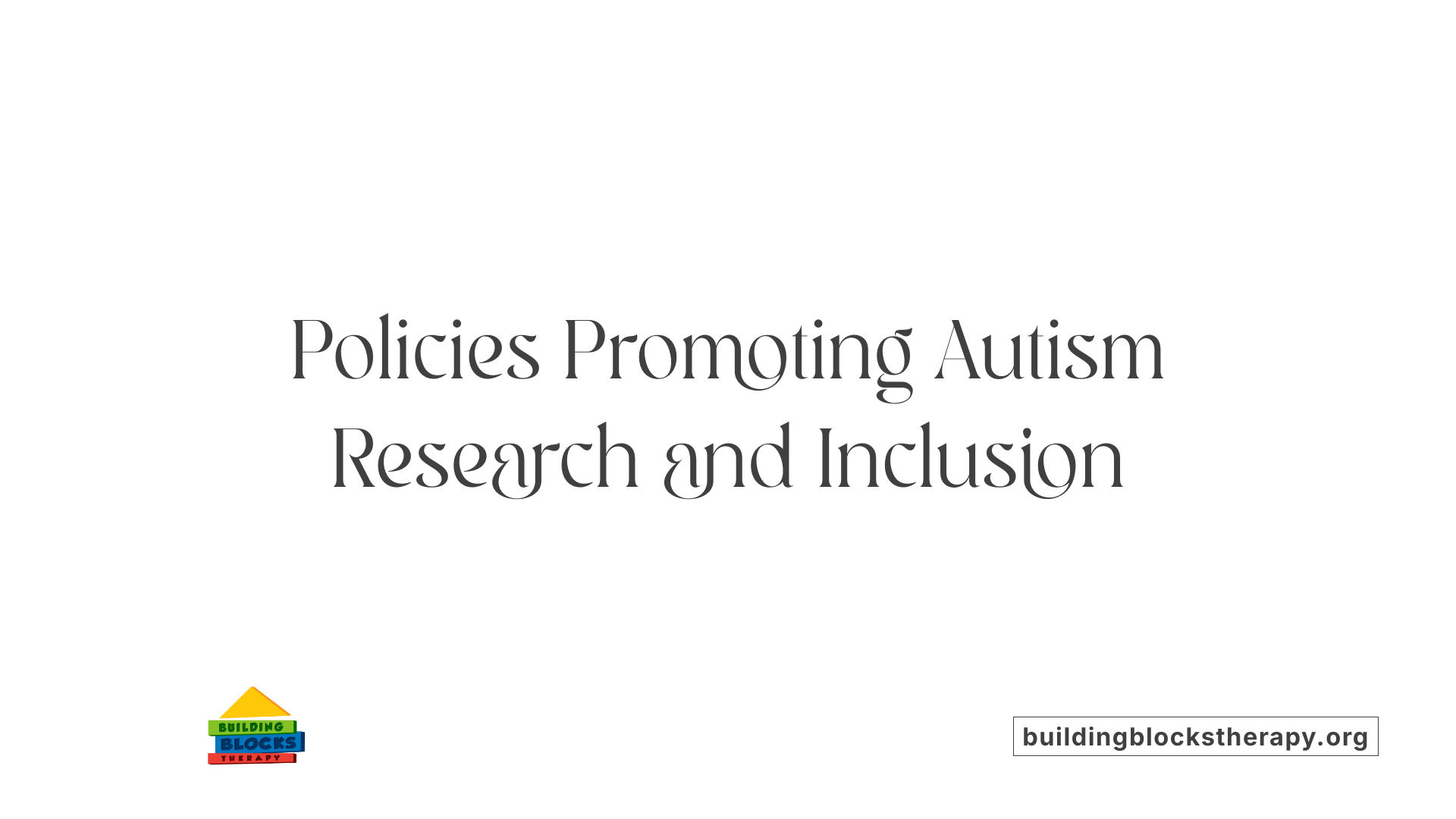
Inclusive Education
Inclusive education policies ensure that children with autism spectrum disorder (ASD) have access to mainstream schools alongside their peers. These initiatives focus on providing appropriate accommodations, specialized training for educators, and individualized support plans. Such measures promote social interaction, reduce stigma, and improve educational outcomes for autistic students by fostering an environment of acceptance and understanding.
Employment Programs
Employment initiatives tailored for individuals with ASD aim to increase workforce participation and economic independence. These programs often include job training, placement services, and workplace accommodations designed to meet the unique needs of autistic adults. By addressing barriers to employment, these policies help improve career opportunities and support sustained job retention.
Comprehensive Social Services
Comprehensive social services for people with autism encompass a range of supports including healthcare access, behavioral therapies, respite care, family training, and advocacy resources. These services are crucial for enhancing quality of life, facilitating independence, and assisting families in navigating the complexities of autism care. Coordinated social services also help bridge gaps in treatment and support, particularly benefiting underserved communities.
Together, these social policies bolster research efforts and foster societal inclusion by creating supportive environments where individuals with autism can thrive. They reflect a commitment to advancing both scientific understanding and real-world integration through targeted, multifaceted strategies.
Future Directions in Autism Research and Treatment

How is interdisciplinary collaboration shaping autism research?
The complexity of autism spectrum disorder (ASD) necessitates a multifaceted approach. Interdisciplinary collaboration unites neurologists, geneticists, psychologists, data scientists, and clinicians to unravel ASD's intricacies. This teamwork accelerates the translation of research into effective diagnostics and therapies, fostering comprehensive assessments that integrate genetic, environmental, and behavioral factors.
What role does precision medicine play in evolving ASD treatment?
Precision medicine tailors interventions to an individual’s genetic profile and environmental exposures. By harnessing genetic testing and biomarker analyses, treatments can be personalized, improving efficacy and reducing side effects. For example, targeted pharmacological strategies can consider specific gene mutations or epigenetic alterations linked to an individual's ASD presentation.
What cutting-edge biotechnologies are influencing future ASD therapies?
Emerging biotechnologies represent a frontier in ASD research. Gene editing tools, such as CRISPR-Cas9, hold promise by potentially correcting gene variants associated with autism. Meanwhile, stem cell therapies and brain organoids enable the study of early neurodevelopment in vitro, providing unique insights into the biological underpinnings of ASD and paving the way for novel interventions.
Together, these future directions highlight a shift toward personalized, biology-driven approaches that aim to enhance diagnosis, deepen understanding, and offer innovative treatment options for individuals across the autism spectrum.
Summary of Factors Behind Increasing Autism Diagnoses
What are the causes behind the increasing autism diagnoses?
The rise in autism spectrum disorder (ASD) diagnoses over recent decades results from multifactorial causes involving scientific advances, societal changes, and methodological factors. This increase is not due to a sudden surge in new cases but rather reflects evolving understanding and detection.
Methodological influences include broadened diagnostic criteria, such as the consolidation of autism subtypes into the ASD spectrum under DSM-5, and improved screening tools like ADOS and ADI-R. These enable identification of previously underdiagnosed individuals, especially those with milder traits requiring less support.
Scientific progress has enhanced early detection through neuroimaging, genetic testing, and biometric tools such as eye-tracking. Such techniques facilitate more accurate and earlier diagnosis. Genetic research reveals hundreds of ASD-associated variants, emphasizing its complex polygenic nature combined with environmental interactions.
Sociocultural factors also play a role, with greater public awareness, social campaigns, and acceptance leading to increased recognition of ASD across diverse populations and age groups. These contribute to more individuals, including adults, seeking evaluation and diagnosis.
The interplay of these aspects demands a nuanced understanding, avoiding oversimplified notions like an "autism epidemic." Instead, it highlights the importance of continued investment in diagnostic refinement, healthcare accessibility, and supportive interventions tailored to diverse needs.
| Influence Category | Description | Examples/Details |
|---|---|---|
| Scientific Advances | Improved diagnostic and genetic methods | Neuroimaging, polygenic risk scores, biomarkers |
| Societal Factors | Increased awareness and acceptance | Social campaigns, self-diagnosis trends |
| Methodological Changes | Broader criteria, standardized tools | DSM-5 criteria, ADOS, enhanced screening |
This comprehensive perspective is vital for informed public health strategies and equitable resource allocation to support individuals on the spectrum effectively.
Understanding the Rise to Inform the Future
The observed increase in Autism Spectrum Disorder diagnoses over recent decades reflects a complex interplay of factors including advances in diagnostic techniques, expanded definitions, heightened societal awareness, and genetic-environmental influences. While the rising numbers may initially raise concerns, much of the trend is attributable to improved detection and inclusivity rather than an actual surge in cases. Behavioral therapies such as ABA remain central to treatment, helping individuals with autism achieve greater independence and quality of life. Continued research, equitable healthcare access, and societal acceptance are essential to support the growing population of people with autism and foster their full participation in society.
References
- Understanding autism: Causes, diagnosis, and advancing ...
- Prevalence Trends and Treatment Patterns of Autism ...
- Autism Diagnosis Among US Children and Adults, 2011- ...
- New advances in the diagnosis and treatment of autism ...
- Polygenic and developmental profiles of autism differ by ...
- Autism spectrum disorder: overdiagnosis or a new ...
- Is There an Autism Epidemic? | Johns Hopkins






